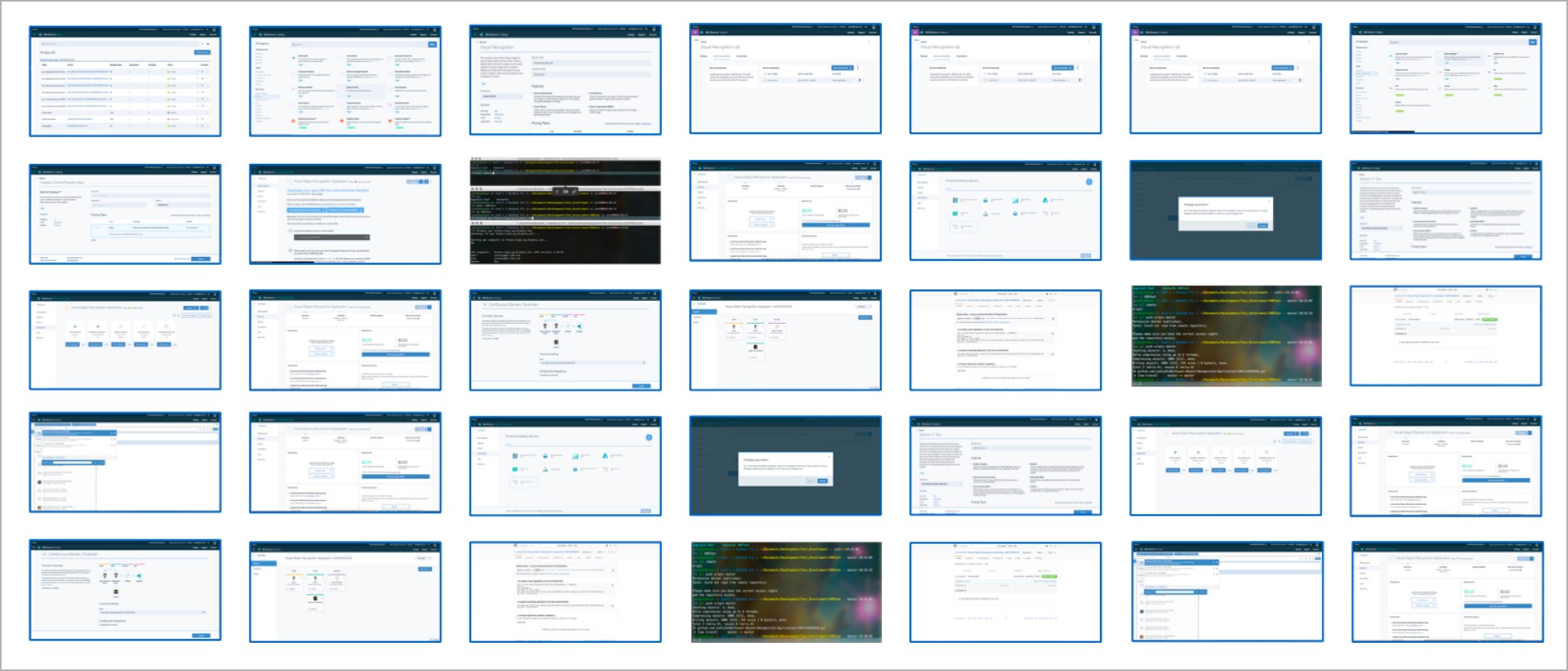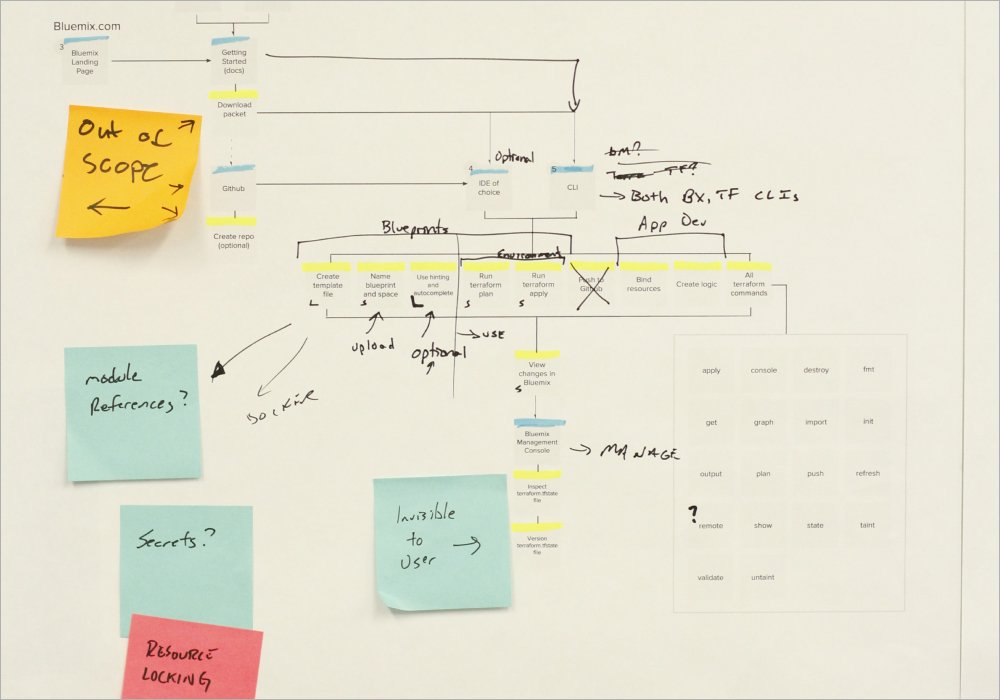Research + Product Design
IBM Cloud Schematics
Reimagining consumption and scalability of deployable content, from end to end, for a maturing Cloud Platform.
Role: I participated in research and synthesis. I led product design and UX writing across the project lifecycle. I collaborated with another product designer and my cross-functional team.
Opportunity
The platform’s product suite expanded and the customer base was diversifying. Organizational verticals and changing priorities resulted in siloed experiences that didn’t reflect mental models for building solutions at scale.
As a new team member, I had to get up to speed. To understand IBM’s solution ecosystem, I reviewed existing research and inventoried our deployable content. We also facilitated stakeholder interviews with architects who routinely interact with clients. Through observing engineers’ workflows, I learned IBM provides little guidance and it can take hours to days to provision an end-to-end solution. I identified three hypotheses to explore and test:
Discovering examples of value is difficult in an ecosystem where product teams deliver isolated experiences that don’t explain how services work together.
Our users discover and build solutions use-case first. Therefore, our experience needs to be use-case-driven.
The platform allows users to manage services, but only in their respective consoles leading to frequent context switching. Users want to provision services in a centralized and automated fashion.
-

56+ steps to provision a video recognition application
User research
This problem space was big so I used a mixed methods research approach to create focus.
I surveyed 150+ customers to understand their definition of deployable content, top use-cases, and pain-points for understanding our services. 33% of respondents considered themselves multi-disciplinary and worked at smaller companies, which was an unexpected evolution of our customer base. Findings were used to inform research objectives for 1:1 interviews with IBM clients who recently migrated to the cloud.
Key findings
Workarounds are expensive
IBM doesn’t readily share DevOps best practices, making it difficult to understand the optimal way of building, scaling, and managing a solution. Clients are paying CASE architects as a workaround to understand our platform.
Users fend for themselves
Our lack of detail forces users to research what services work together. Not defining solutions at a use-case level leaves users with no standardized way of encoding best practices.
Repetition has consequences
Users are frustrated when services don’t integrate well or share credentials. Developers repeat processes to provision and integrate their services, impeding collaboration and scalability.
They want to give back
There's no standardized way to publish best practices, limiting clients’ ability to monetize solutions and contribute to the cloud migration community.
Project planning
The scope of these findings touched many organizational verticals so we aligned with impacted teams on the problem, prioritized ideas, and created a roadmap.
We scoped two workstreams to meet our goals: a use-case driven deployable content catalog and a new service management offering using Terraform. I owned the design for our new Terraform service management offering. With the engineering team, I mapped the systems, APIs, and integrations needed to support the experience. Together, we aligned on feasibility and what was most impactful for the first release.
Outcome
Schematics, our new service management offering, was piloted internally with employees, followed by a general availability release.
Leading up to the release, I led participatory design and feedback sessions with my team and users. I also worked with the other workstream on defining how the content catalog experience holistically impacted the service management experience, and vice versa, from a user’s perspective.
-

Getting started
Both technical and non-technical users want to understand how a product works before investing their time in using it. I created an experience that educated them on what they make with the service.
-

Concept overview
Terraform introduced new concepts that weren’t well understood by less technical users. I visualized the relationship between an environment and configuration.
-

Activity
Multiple users can make changes to an environment and our current activity feed wasn’t flexible enough to provide necessary detail. I led an initiative to evolve our activity component so it could accommodate more use-cases.
-

In-context best practices
Without previewing changes to an environment before applying them, something unexpected could happen. To teach Terraform best practices, I added guidance in critical flows.
-

Deployable templates
A future release included deployable templates. I designed an experience where users could manage services in a centralized place using Terraform.
-

Access control
A future release also included the ability to add collaborators and set permissions, so users could safely manage environments.
Key results
Schematics made cloud assets reusable, which improved development efficiency and a reduction in errors due to misconfigured infrastructure.
We empowered self-sufficiency through the usage of pre-built infrastructure templates published by IBM, partners, and others in the cloud community.
We went from 56+ steps over the course of days to 5 steps within a few minutes to provision a Watson solution.
Continued improvements
When the service was released to a wider audience, we continued to support the effort and iterated based on feedback.
Schematics was the first step towards a new strategic direction for how the platform bundled its services. The team continued to improve the experience and define new opportunities, such as creating “sponsored" configurations. I also continued to have participatory design sessions with clients and cross-functional partners. Over time, we learned those with more technical roles were early adopters of the service and once three pre-made configurations were released, less technical roles were more inclined to experiment with it. Schematics is still maintained by IBM today.
If you are interested in learning more about this work, reach out, and let’s chat.

